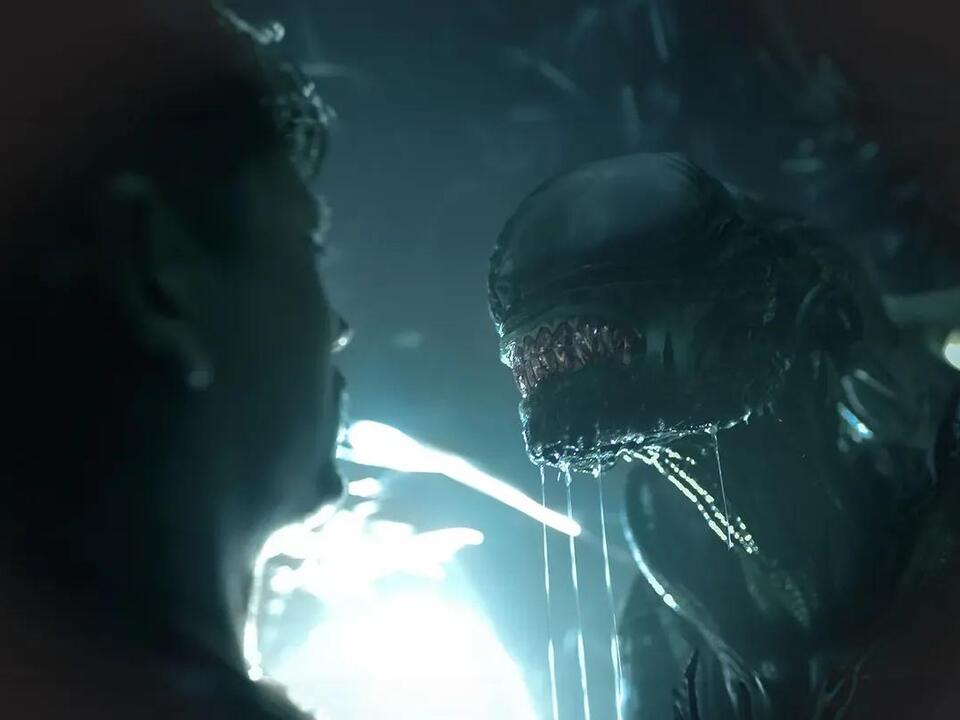Physical Address
304 North Cardinal St.
Dorchester Center, MA 02124
Physical Address
304 North Cardinal St.
Dorchester Center, MA 02124

Forty-five years after “Alien” launched horror into space, much has been analyzed about its xenomorphs, face-huggers, and the distrust of synthetic persons. These elements continuously recycle through the franchise, which expands like space itself. However, the metaphorical power of the original 1979 film and its 1986 sequel, “Aliens,” still sparks analysis even decades later.
Ridley Scott didn’t initially set out with grand intentions when he directed the first film. He wasn’t even the first choice. But, as he explained in the Director’s Cut commentary, he won the job by pitching “the most straight-forward, unpretentious, riveting thriller like ‘Psycho’ or ‘Rosemary’s Baby,’ or even the most brilliant B-levels like ‘Night of the Living Dead’ or ‘Texas Chain Saw Massacre,’ but I want it to look like ‘2001.’”
In essence, a horror movie set in space where, famously, no one can hear you scream.
In “Alien: Romulus,” director and co-writer Fede Álvarez stays true to this original vision, focusing on mood and tension. He delivers a standalone adventure filled with jump scares, stripping away much of the allegorical weight.
Álvarez skillfully melds elements from previous films, including James Cameron’s action-packed “Aliens” and the biological horrors of “Alien: Resurrection,” while also nodding to the mythos-expanding prequels. Miraculously, he does this without falling into cliché or predictable “don’t go in there” stupidity.
“Romulus” returns us to the sweaty anxiety of the original “Alien,” paying homage to its stark realism and the theme of corporate exploitation. The franchise began with a crew of underpaid space truckers on a mission beyond their expertise, forced upon them by an undercover android in their team.
Archie Renaux as Tyler and Cailee Spaeny as Rain Carradine in “Alien: Romulus” (Photo courtesy of 20th Century Studios) The young adults in “Romulus” choose their peril, though it’s driven by desperate circumstances. Like their predecessors, they are exploited by Weyland-Yutani, the mega-corporation chasing a deadly parasite across space and time.
Set between “Alien” and “Aliens,” “Romulus” explores the plight of 20-somethings trapped in the Jackson’s Star mining colony, indentured to Weyland-Yutani. Living in perpetual darkness, they are expendable. Rain Carradine, played by Cailee Spaeny, dreams of sunlight, an experience she’s never had.
Rain’s only family is her adopted brother Andy, an outdated android programmed by their late father. When a group of friends, including Rain’s ex Tyler and his sister Kay, plot to steal a work vehicle and flee, Andy is the key to their plan. Despite her reservations, the allure of escaping the dark colony proves too strong for Rain to resist.
Álvarez, known for his 2013 “Evil Dead” remake and “Don’t Breathe,” effectively uses silence to build tension in “Romulus.” He crafts a film that slows down to steep viewers in fear, making it an engaging experience.
Xenomorph and Cailee Spaeny as Rain Carradine in “Alien: Romulus” (Photo courtesy of 20th Century Studios) To add to the scare factor, Álvarez insists on practical effects for the xenomorphs, a nod to the series’ roots. Compared to the digital creatures in “Alien: Covenant,” these practical effects heighten the intensity and menace of the aliens.
The film pays tribute to the claustrophobia of the original “Alien.” The confined spaces of the vessel and the dark, flooded rooms of the space station create a sense of dread. Though not perfect, “Romulus” evokes the feel of a classic “Alien” movie.
The first three “Alien” films revolve around Sigourney Weaver’s Ellen Ripley and explore themes like motherhood and corporate greed. They highlight the loneliness and the struggle against a superior enemy.
“Alien: Romulus” lacks the emotional and intellectual depth of the best entries in the franchise. There are hints of themes, such as the station’s division into sides named Romulus and Remus, but these ideas are not fully developed.
Nonetheless, the movie succeeds as an entertaining ride, thanks to standout performances. David Jonsson’s portrayal of Andy, who transitions from a simple guardian to a formidable opponent, adds depth to the story.
Cailee Spaeny as Rain Carradine and David Jonsson as Andy in “Alien: Romulus” (Photo courtesy of 20th Century Studios/Murray Close) While “Romulus” proves to be an enjoyable addition to the franchise, it lacks a compelling emotional core. Álvarez and co-writer Rodo Sayagues revert to familiar tropes from previous films, resulting in predictable moments.
The franchise could benefit from a new, Ripley-like character to drive future stories. Absent this figure, “Romulus” feels like a well-made but ultimately superficial chapter in the ongoing saga.
“Alien: Romulus” hits theaters Friday, Aug. 16.
Source: source names



